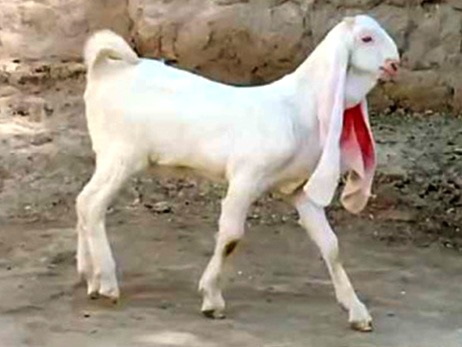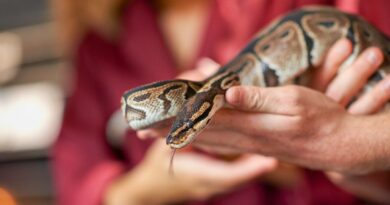Discover the Unique Charm and Benefits of the Gulabi Goat: A Complete Guide
The Gulabi goat, renowned for its striking beauty and high economic value, holds a special place in the world of livestock. Known for its distinctive physical traits and exceptional adaptability, the Gulabi goat is not only a prized possession for farmers but also an important breed for enthusiasts and traders globally. In this comprehensive guide, we delve into the unique charm, characteristics, and benefits of the Gulabi goat, covering everything you need to know about this remarkable breed.
What is a Gulabi Goat?
The Gulabi goat is a hybrid breed primarily developed in Pakistan by crossbreeding various local breeds, such as the Beetal, Rajhanpuri, and Kamori goats. The name “Gulabi,” meaning “pink” in Urdu, is inspired by the goat’s pinkish hue and its soft, silky coat. Its striking appearance, combined with its excellent milk and meat production capabilities, makes it one of the most sought-after breeds in South Asia.
Distinctive Characteristics of the Gulabi Goat
1. Physical Appearance
- Ears: The Gulabi goat has long, floppy ears, often referred to as “pendulous” ears, which enhance its aesthetic appeal.
- Coat Color: A soft white or pale pinkish coat is a hallmark of this breed, giving it its name.
- Size: These goats are medium to large, with males weighing up to 90 kg and females up to 70 kg.
- Horns: Most Gulabi goats are polled (naturally hornless), but some may have small horns.
2. Temperament
- Docile Nature: Gulabi goats are gentle and easy to handle, making them suitable for both small-scale and large-scale farming.
- Adaptability: They are well-suited to hot climates, which is why they thrive in arid and semi-arid regions.
3. Reproductive Efficiency
Gulabi goats are prolific breeders, with high kidding rates. They often give birth to twins or triplets, adding to their economic appeal for farmers.
The Economic Value of Gulabi Goats
1. Meat Production
Gulabi goats are known for their tender, flavorful meat, which is in high demand in South Asian and Middle Eastern markets. Their rapid growth rate ensures quick returns on investment for meat producers.
2. Milk Production
Although primarily bred for meat, the Gulabi goat is also a good milk producer. Their milk is rich in nutrients and often used in the production of cheese, yogurt, and other dairy products.
3. High Market Demand
Due to their aesthetic appeal and utility, Gulabi goats fetch high prices in livestock markets. They are often showcased in competitions and exhibitions, further driving their market value.
Breeding and Care for Gulabi Goats
1. Feeding Requirements
- Balanced Diet: Gulabi goats require a balanced diet consisting of green fodder, grains, and supplements to ensure optimal growth and productivity.
- Hydration: Access to clean, fresh water is crucial, especially in hot climates.
2. Housing
- Ventilation: Proper ventilation is essential to prevent heat stress and respiratory issues.
- Space: Ensure adequate space per goat to reduce stress and promote healthy growth.
3. Health Care
- Vaccinations: Regular vaccinations protect against common diseases like PPR (Peste des Petits Ruminants) and foot-and-mouth disease.
- Parasite Control: Routine deworming helps maintain digestive health and prevent weight loss.
- Veterinary Checks: Periodic health assessments ensure early detection and treatment of illnesses.
The Cultural Significance of Gulabi Goats
In many South Asian communities, Gulabi goats are more than just livestock; they hold cultural and religious significance. These goats are often preferred for sacrifices during festivals like Eid al-Adha due to their unique appearance and high value. They are also considered a symbol of prosperity and are sometimes gifted during celebrations.
Why Choose Gulabi Goats for Farming?
1. High Return on Investment
The Gulabi goat’s dual-purpose nature (meat and milk production) ensures steady income for farmers. Their aesthetic appeal also makes them a preferred choice in niche markets.
2. Easy Maintenance
Thanks to their adaptability and low maintenance requirements, Gulabi goats are ideal for beginners in goat farming.
3. Breeding Potential
Their ability to produce multiple kids per pregnancy allows farmers to grow their herd quickly and profitably.
Challenges in Raising Gulabi Goats
While the benefits are numerous, there are challenges that farmers should be aware of:
- Susceptibility to Diseases: Like all livestock, Gulabi goats are prone to diseases if not properly vaccinated and cared for.
- High Initial Investment: Due to their popularity, purchasing Gulabi goats can be expensive.
- Climate Sensitivity: Although they adapt well to hot climates, extreme weather changes can impact their health.
Tips for Successful Gulabi Goat Farming
1. Choose Quality Breeding Stock
Purchase goats from reputable breeders to ensure you’re starting with healthy and genetically superior animals.
2. Maintain Hygiene
Clean housing and feeding areas regularly to prevent disease outbreaks.
3. Monitor Diet
Provide a nutrient-rich diet to maximize growth, milk production, and reproductive efficiency.
4. Utilize Technology
Leverage farm management software to track health, breeding, and production data for your herd.
The Global Appeal of Gulabi Goats
Beyond South Asia, the Gulabi goat is gaining popularity in regions like the Middle East, Africa, and even parts of Europe. Export markets for Gulabi goats are expanding, as their unique characteristics and productivity make them desirable for both farming and exhibitions.
Sustainability and Gulabi Goats
1. Environmental Impact
Gulabi goats are known for their efficient feed conversion, which reduces waste and minimizes their environmental footprint.
2. Livelihood Support
For small-scale farmers, Gulabi goats provide a reliable source of income and food security, contributing to rural development.
Frequently Asked Questions About Gulabi Goats
Q1: What is the average lifespan of a Gulabi goat?
A well-cared-for Gulabi goat can live up to 12-14 years.
Q2: How much milk can a Gulabi goat produce daily?
On average, a Gulabi goat produces 2-3 liters of milk per day, depending on its diet and health.
Q3: Are Gulabi goats suitable for beginners?
Yes, their docile nature and adaptability make them an excellent choice for novice farmers.
Q4: How much does a Gulabi goat cost?
Prices vary based on age, health, and location, but they typically range from $300 to $1,000 or more.
Conclusion
The Gulabi goat is more than just a beautiful breed—it is a testament to the potential of sustainable livestock farming. Whether you’re a farmer seeking a profitable investment, a breeder aiming to expand your herd, or an enthusiast captivated by their charm, the Gulabi goat offers unmatched value. With proper care and management, these goats can become a cornerstone of agricultural success while contributing to cultural heritage and economic growth.
By understanding the unique charm and benefits of the Gulabi goat, you can unlock new opportunities in farming and livestock management. Embrace the journey with this exceptional breed, and watch your efforts yield both financial and personal satisfaction




